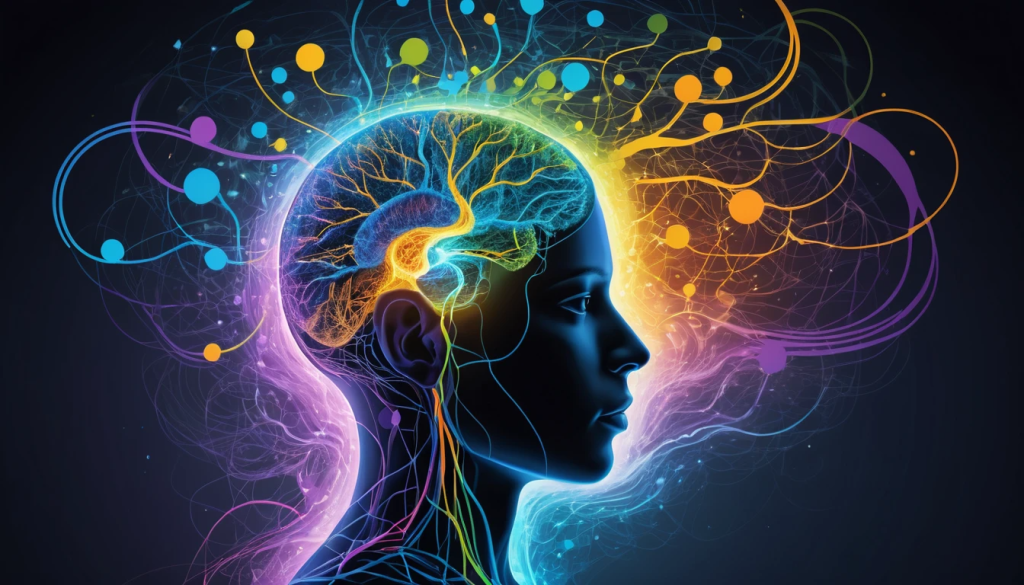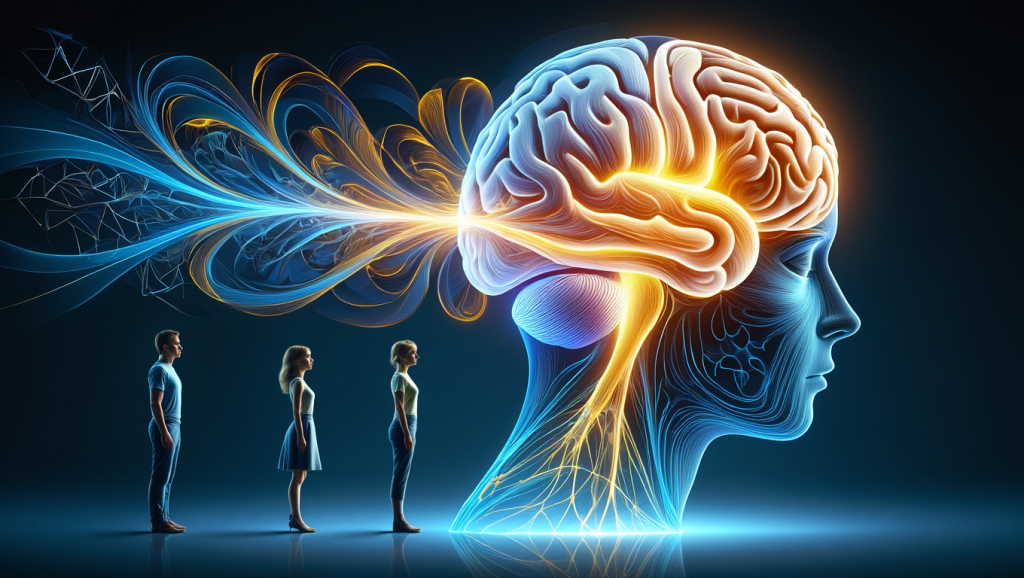Introduction
Brain entrainment has emerged as a powerful tool for those seeking to optimize their mental states, enhance focus, and achieve deeper relaxation. Yet despite its growing popularity, many people still have questions about how it works, what to expect, and how to get the most from this fascinating technology. In this comprehensive FAQ, we’ll address everything you’ve ever wanted to know about brain entrainment, with a special focus on isochronic tones and brainwaves.
Fundamental Questions
What exactly is brain entrainment?
Brain entrainment (also called brainwave entrainment) is a method of stimulating the brain into entering a specific state by using rhythmic stimuli. The principle behind it is called “frequency following response,” where your brainwaves naturally synchronize with external rhythmic frequencies. This can be achieved through auditory means (like isochronic tones, binaural beats, or monaural beats), visual stimulation (like flickering lights), or a combination of both.
How does brain entrainment actually work?
Your brain produces electrical activity that fluctuates in regular patterns called brainwaves. These brainwaves change depending on your mental state—when you’re alert, you produce more beta waves; when relaxed, more alpha waves; and so on. Brain entrainment works by presenting your brain with a rhythmic stimulus (like a pulsing sound) at a specific frequency. Your brain recognizes this rhythm and begins to match it, essentially “entraining” to the target frequency.
What are the main types of brain entrainment?
The main types include:
- Isochronic tones: Single tones that turn on and off rapidly at regular intervals
- Binaural beats: Two slightly different frequencies played in each ear, creating a third “phantom beat”
- Monaural beats: Two tones already mixed together before reaching your ears
- Visual entrainment: Flickering lights at specific frequencies
- Audio-visual entrainment: Combination of sound and light pulses
All About Brainwaves
What are the different brainwave states?
- Delta waves (0.5-4 Hz): Associated with deep sleep and healing
- Theta waves (4-8 Hz): Connected to deep relaxation, meditation, creativity, and REM sleep
- Alpha waves (8-13 Hz): Relaxed alertness, calmness, and positive thinking
- Beta waves (13-30 Hz): Normal waking consciousness, logical thinking, and focus
- Gamma waves (30-100 Hz): Higher mental activity, peak concentration, and cognitive enhancement
How do I know which brainwave state I should target?
Different states serve different purposes:
- Choose delta for deep sleep improvement and physical healing
- Use theta for deep meditation, creativity enhancement, and emotional processing
- Select alpha for relaxation, stress reduction, and learning preparation
- Opt for beta when you need focus, concentration, and problem-solving
- Try gamma for peak mental performance and cognitive processing
Can I be in multiple brainwave states simultaneously?
Yes! Your brain never produces just one type of brainwave. Different parts of your brain can produce different frequencies simultaneously. However, one type usually dominates depending on your mental state. Entrainment helps shift the dominant frequency toward your desired state.
Isochronic Tones Explained
What makes isochronic tones different from binaural beats?
Isochronic tones are distinct, evenly-spaced pulses of a single tone that turn on and off rapidly. Unlike binaural beats, which require headphones to work (as they rely on each ear receiving a different frequency), isochronic tones work effectively with or without headphones. Many find isochronic tones to be more potent and faster-acting than binaural beats because the distinct on-off pattern creates a stronger stimulus for the brain to follow.
Do I need headphones for isochronic tones?
No! This is one of the key advantages of isochronic tones. While headphones can enhance the experience by reducing external distractions, they aren’t necessary for the entrainment effect to work. The distinct pulses of isochronic tones can be perceived clearly whether played through headphones, speakers, or other audio devices.
Are isochronic tones backed by science?
Yes. Research has shown that rhythmic auditory stimulation can influence brainwave patterns. A growing body of studies indicates that isochronic tones may be more effective than other forms of auditory entrainment for producing brainwave synchronization. However, it’s worth noting that individual responses can vary, and more extensive clinical research is still ongoing.
Practical Usage Questions
How long should I listen to entrainment tracks?
For beginners, start with 15-30 minute sessions. As you become more experienced, you might extend to 45-60 minutes. Some people benefit from longer sessions for specific purposes (like sleep enhancement), but quality is generally more important than duration. Consistency is key—regular shorter sessions often yield better results than occasional marathon sessions.
How quickly will I notice effects from brain entrainment?
Some effects can be felt immediately during your first session, such as relaxation or increased alertness (depending on the frequency). However, the more substantial benefits often develop with regular use over 1-4 weeks. Think of it as mental training—just like physical exercise, consistency leads to more noticeable and lasting results.
Can I listen to entrainment tracks while driving or operating machinery?
No, this is strongly discouraged. Brain entrainment can alter your state of consciousness and potentially reduce alertness or induce relaxation, which could be dangerous while driving or operating machinery. Always use entrainment tracks in a safe environment where you can relax or focus without risking your safety.
Will brain entrainment work for everyone?
While most people respond to brain entrainment, sensitivity varies from person to person. Some individuals experience profound effects immediately, while others might require more time or different frequencies to notice changes. A small percentage of people may be less responsive to certain entrainment methods. If one approach doesn’t seem effective, trying a different type (switching from binaural beats to isochronic tones, for example) can sometimes yield better results.
Safety and Effectiveness
Are there any side effects or risks with brain entrainment?
For most people, brain entrainment is safe with minimal side effects. However, some individuals might experience:
- Temporary headaches or dizziness (usually when sessions are too long)
- Feelings of disorientation after deep sessions
- Vivid dreams when using entrainment before sleep
These effects are typically mild and temporary. However, people with certain medical conditions should consult healthcare providers before using brain entrainment:
- Those with epilepsy or seizure disorders
- People with cardiac pacemakers
- Individuals with certain psychiatric conditions
- Those who are pregnant
Can children use brain entrainment?
With proper supervision and age-appropriate tracks, brain entrainment can be safe for children. However, consult with a healthcare provider first, especially for children with neurological conditions or attention disorders. Children’s brains are still developing and may respond differently to entrainment than adult brains. Always start with shorter sessions and gentler frequencies.
Can brain entrainment help with specific conditions?
Research suggests potential benefits for:
- Stress and anxiety reduction
- Sleep improvement
- Focus and attention enhancement
- Meditation support
- Pain management
- Mood enhancement
However, brain entrainment should be viewed as a complementary approach rather than a replacement for professional medical treatment for diagnosed conditions.
Technical Questions
What’s the difference between a carrier frequency and a beat frequency?
- Carrier frequency: The base tone that you actually hear (e.g., 200 Hz)
- Beat frequency: The rate at which the tone pulses on and off (e.g., 10 Hz)
With isochronic tones, the carrier is what you physically hear, while the beat frequency is what influences your brainwaves. For example, you might hear a 200 Hz tone pulsing at 10 Hz to entrain your brain to alpha waves.
Do I need special equipment to create or use brain entrainment?
For listening, no special equipment is needed beyond a device that can play audio files and speakers or headphones. For creating your own tracks, numerous software programs and apps are available, ranging from simple to professional. At PeterMican.com, we offer carefully crafted professional tracks designed for optimal entrainment results.
What about white noise, nature sounds, or music with entrainment—do they affect the results?
Background sounds don’t interfere with the entrainment effect as long as the isochronic pulses remain clearly audible. In fact, many people find that pleasant background sounds make the experience more enjoyable, which can enhance the overall effectiveness. Our tracks incorporate carefully selected background elements that complement the entrainment frequencies without diminishing their impact.
Getting the Best Results
How can I maximize the effectiveness of brain entrainment sessions?
- Create the right environment: Find a quiet, comfortable space with minimal distractions
- Be consistent: Regular practice yields better results than occasional use
- Start simple: Begin with alpha or theta frequencies before exploring deeper states
- Be patient: Allow yourself time to adapt to the experience
- Stay hydrated: Proper hydration supports optimal brain function
- Use quality recordings: Higher-quality entrainment tracks tend to be more effective
Can I combine brain entrainment with other practices?
Absolutely! Brain entrainment works exceptionally well when combined with:
- Meditation
- Visualization
- Self-hypnosis
- Breathing exercises
- Progressive muscle relaxation
- Mindfulness practices
The entrainment helps your brain reach the optimal state for these practices, making them potentially more effective.
What if I fall asleep during a session?
This is completely normal, especially with theta and delta frequencies. If your goal is meditation or conscious relaxation, try using a slightly higher frequency, sitting upright instead of lying down, or practicing earlier in the day when you’re more alert. If sleep enhancement is your goal, then falling asleep during the session can be beneficial.
Conclusion
Brain entrainment, particularly with isochronic tones, offers a fascinating and accessible way to influence your mental states and potentially enhance various aspects of your cognitive and emotional wellbeing. As with any practice that affects the mind, individual experiences vary, and finding the right approach for your specific needs may take some experimentation.
At PeterMican.com, we’re committed to providing high-quality brain entrainment resources based on sound scientific principles. Our carefully crafted tracks incorporate the most effective entrainment methods to help you achieve your desired mental states—whether you’re seeking deeper relaxation, improved focus, enhanced creativity, or better sleep.
Have a question that wasn’t answered here? Feel free to reach out to us through our contact page, and we’ll be happy to help you on your brain entrainment journey.
Disclaimer: Brain entrainment is intended as a complementary practice and not a replacement for professional medical advice, diagnosis, or treatment. Always consult with qualified healthcare providers regarding any medical conditions or concerns.







